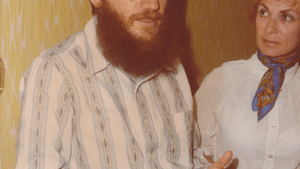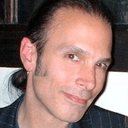Stay in the Loop
BSR publishes on a weekly schedule, with an email newsletter every Wednesday and Thursday morning. There’s no paywall, and subscribing is always free.
Letting their people go
NMAJH presents 'Power of Protest: The Movement to Free Soviet Jews'

As a pop-up panel exhibition in the bowels of Old City’s National Museum of American Jewish History, Power of Protest: The Movement to Free Soviet Jews isn’t large. It’s composed of a handful of freestanding panels and video monitors designed to travel to schools, synagogues, and wherever else interest lies. But like its subject, refusenik Jews finding freedom in and from the Soviet Union after years of civil rights violations, it reflects the tenacity of the human spirit.
Using art, personal memorabilia, and documentary footage from the United States and abroad, the exhibition depicts both the persecuted and the freedom fighters.
For Jews in the Soviet Union, held captive behind the Iron Curtain, there was no freedom — no schools of their own, no ability to practice their faith, no communication allowed with outside friends or family, nothing they could call their own. One protest sign from a rally in Washington for the liberation of Soviet Jews truly said it all: “Let Them Live as Jews… Or Let Them Leave!”
Photographs of worldwide protests against the unfathomably unfair treatment of Soviet Jews could be ripped from CNN or the New York Times coverage of some of the largest U.S. marches. Thirty years ago, presidential-candidate Ronald Reagan made Soviet Jewish freedom a campaign promise. A centerpiece of the exhibition is 1987 video footage of a rally where Vice President George Bush implores the still-new leader of the Soviet Union, Mikhail Gorbachev, to release the Jews or allow them to practice their religion freely.
The exhibition also highlights the results of that campaign with footage of once-Soviet families now living in Jenkintown and Feasterville. In the videos, the subjects describe their feelings of helplessness under the oppressive regime.
As explained by the museum’s curatorial staff, its permanent collection includes artifacts from local activists whose stories and objects they were able to incorporate into the panels. They worked with Philadelphia-based activist and refusenik Marina Furman (she's also on the exhibition’s advisory committee) and partnered with the Anti-Defamation League to present a talk with Soviet Jewry advocate Connie Smukler.
Beyond moving and still photography, the show’s freestanding panels offer history mini-lessons through timelines dating back to 1918. Its protest art is as varied as it is poignant. Dan Reisinger’s 1969 poster proclaiming “Let My People Go!” (with the letter "G" replaced by a hammer and sickle) is particularly cogent, and examples of sharp political propaganda appear throughout. One poster advocating for the “Prisoner of Conscience” asks that all participants who display the item also donate to the fight for the freedom of Soviet Jews.
That fight wasn’t always violent — sometimes it came down to simple gestures meant to aid those in need of comfort or contact. For example, the inclusion of a simple Wrigley’s gum wrapper: the panel reveals that “Leslie Schaffer of Reno, Nevada, used these gum wrappers to discreetly transport information back to the United States about refuseniks she met in Leningrad, Moscow, and Kiev in 1982. American organizations and human rights activists used this information to advocate for the freedom of refuseniks.”
Small gestures such as these were part of the struggle for simple freedoms, and Power of Protest: The Movement to Free Soviet Jews explodes those minor miracles into something miraculous.
What, When, Where
Power of Protest: The Movement to Free Soviet Jews. Through January 15, 2018, at the National Museum of American Jewish History, 101 S. Independence Mall East, Philadelphia. (215) 923-3811 or www.nmajh.org.
Sign up for our newsletter
All of the week's new articles, all in one place. Sign up for the free weekly BSR newsletters, and don't miss a conversation.

 A.D. Amorosi
A.D. Amorosi